Physical Address
304 North Cardinal St.
Dorchester Center, MA 02124
Physical Address
304 North Cardinal St.
Dorchester Center, MA 02124

Since its debut, Star Trek: Discovery has introduced fans to a remarkable array of starships, each with its own unique design and significance within the Star Trek universe. Exploring distant reaches of space, the series spans multiple seasons and even centuries, showcasing advancements in technology and starship evolution. From the iconic U.S.S. Discovery to the innovative vessels of the 32nd century, every season brings new ships into the spotlight. This article provides an in-depth look at the various ships featured throughout all five seasons of Star Trek: Discovery, as well as a glimpse at their appearances in Star Trek Online, highlighting their roles and contributions to the story.
Star Trek: Discovery showcases a fascinating array of starships that expand the Star Trek universe between the original series and later timelines. The most iconic ship is the USS Discovery (NCC-1031), a Crossfield-class vessel notable for its experimental spore drive, which allows near-instantaneous travel across vast distances. This ship’s sleek, modern design contrasts with earlier Starfleet vessels, reflecting the show’s updated aesthetic while fitting into the 23rd-century setting.
Another important ship is the USS Shenzhou (NCC-1227), a Walker-class vessel commanded by Captain Philippa Georgiou, which plays a key role in the early episodes. The series also introduces various Klingon ships, like the Bird-of-Prey and the DaSpu’ class, highlighting the ongoing conflict between the Federation and the Klingon Empire.
Discovery’s starships often feature advanced technology and unique designs, such as the USS Glenn and USS Cabot, which share interior sets with Discovery but have distinct external appearances. These ships enrich the lore by bridging the gap between classic Star Trek designs and the new visual language of the series. Overall, the ships in Star Trek: Discovery blend innovation with homage, offering fans both nostalgia and fresh excitement.
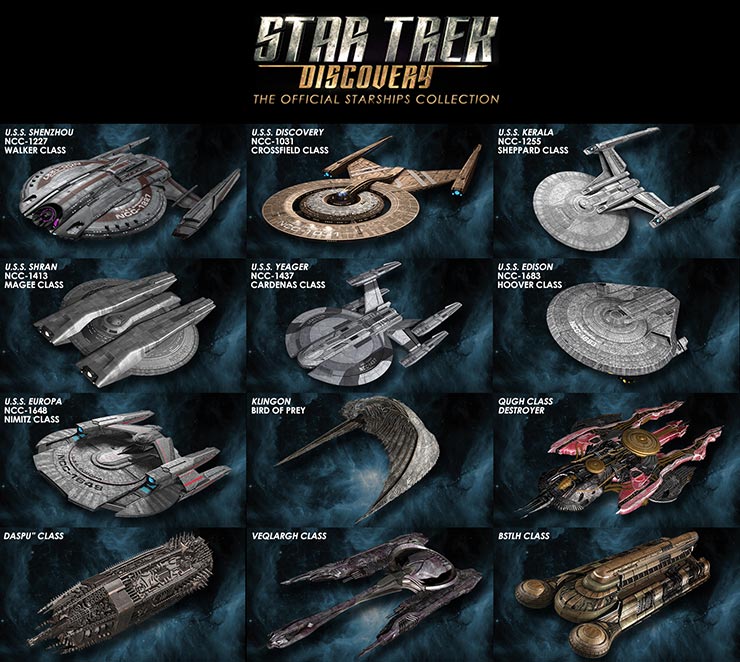
In Star Trek: Discovery, there are several notable starships featured, with the USS Discovery itself being the central vessel. The Discovery is a Crossfield-class ship, known for its experimental spore drive technology, which allows it to travel vast distances instantaneously. Besides the Discovery, the series showcases other significant Federation ships like the USS Enterprise, which is larger and more traditional in design, playing a key role during the Klingon War era. Another ship mentioned is the USS Kerala, a Shepher-class starship involved in battles against the Klingons. The ships in Discovery tend to be larger and more advanced compared to earlier Star Trek series, often named after famous test pilots or military figures, reflecting a modernized Starfleet design aesthetic. The show also introduces stealth and mothership classes like the NI 0047, adding variety to the fleet. Overall, the series expands the Star Trek universe by featuring a diverse array of starships, each with unique capabilities and roles, set across the 23rd to 32nd centuries.
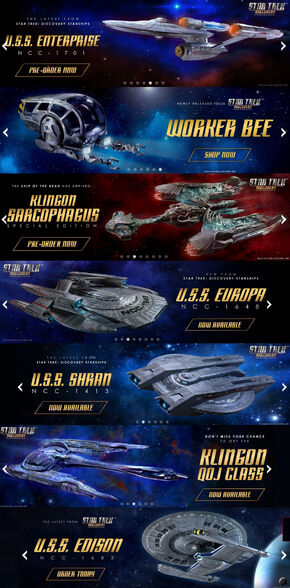
In Star Trek: Discovery Season 1, the main ship featured is the USS Discovery (NCC-1031), a unique Federation starship equipped with experimental technology like the spore drive, which allows instantaneous travel across vast distances. This innovative propulsion system sets Discovery apart from other ships in the Star Trek universe, making it a central focus of the season’s story. The ship’s design reflects a blend of classic 23rd-century Starfleet aesthetics with new, more modern elements, fitting its setting about a decade before the original Star Trek series.
Alongside the USS Discovery, several other Federation ships appear, such as the USS Shenzhou, commanded by Captain Philippa Georgiou, which has a more traditional design reminiscent of earlier Starfleet vessels. Throughout the season, these ships engage in various missions and battles, highlighting the tense political climate and the ongoing war with the Klingons. The ships’ designs and capabilities emphasize both the military and exploratory roles Starfleet plays during this era, balancing the classic Trek spirit with fresh storytelling elements.
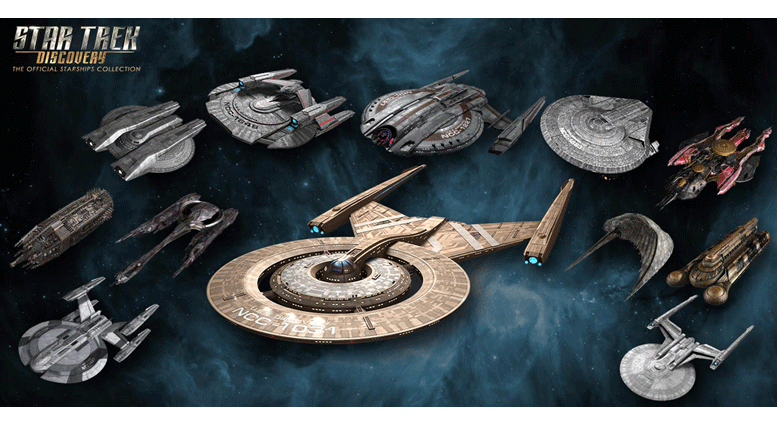
In Star Trek: Discovery Season 2, the ships play a crucial role in exploring the 23rd-century Star Trek universe, set about a decade before The Original Series. The USS Discovery remains the centerpiece, but the season also introduces several other notable ships from various factions and planets. For example, Starfleet vessels like the USS Constellation and USS Archimedes make appearances, grounding the story in familiar Starfleet tradition.
The season also highlights ships from the homeworld of Saru, Kaminar, such as the Kelpiens’ Kaminar Khi’eth type, and introduces the Ni’Var Razor, a small combat ship operated by the planet Ni’Var in the 32nd century, seen in future-set episodes. Larger Vulcan-inspired ships like the Ni’Var T’Pau with its distinctive ring-shaped warp engine also appear, showing the diversity of Federation and allied vessels. These ships contribute to the rich visual and narrative tapestry, emphasizing the political and cultural complexities of the galaxy. The mix of classic and new designs helps bridge the gap between Discovery’s futuristic setting and the established Star Trek lore, making the fleet feel both fresh and authentic.
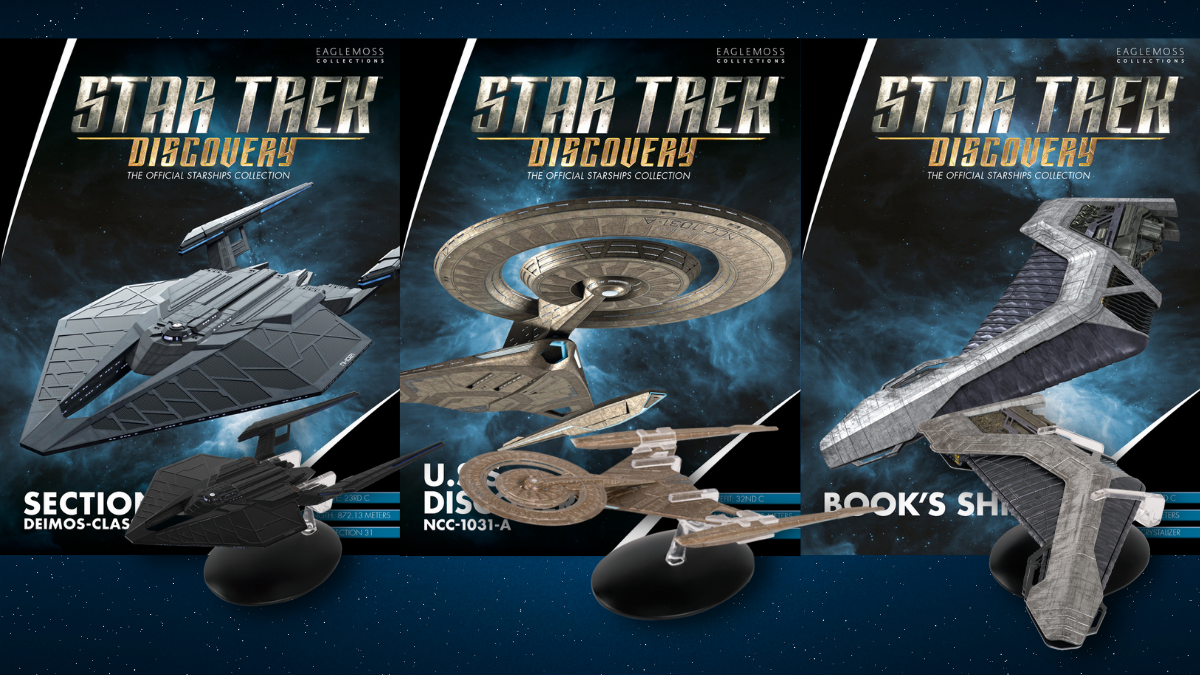
In Star Trek: Discovery Season 3, the show takes us far into the 32nd century, introducing a fascinating array of futuristic starships that reflect the advanced technology of that era. One standout is the USS Armstrong, a massive Constitution-class starship measuring about 1,400 meters long. It’s a sleek evolution of earlier designs but notably lacks the traditional neck connecting the saucer and engineering sections, showing how ship design has evolved over centuries. Another intriguing vessel is the USS Maai, an Angelo-class ring ship with a unique circular structure about 219 meters in diameter. Inside, it even houses a rainforest biosphere, blending technology with nature in a way that feels very forward-thinking.
We also meet Book’s scout ship early in the season, a small, highly maneuverable craft capable of cloaking, transwarp, and even quantum slipstream travel, although the latter is risky. This ship has some remarkable features like the ability to dissect itself for quick turns and a programmable matter console for navigation. Its interior is quite compact, with the bridge doubling as living quarters, emphasizing efficiency and advanced tech integration. These ships highlight the leap in Starfleet’s capabilities and the imaginative vision of the future that Discovery explores.
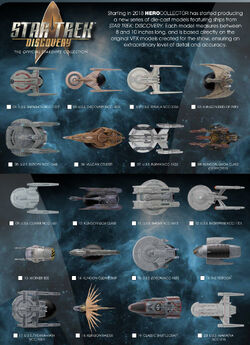
In Star Trek: Discovery Season 4, the ships reflect a fascinating blend of classic and futuristic designs as the story unfolds in the 32nd century. The USS Discovery continues to be central, but we also see new starships like the USS Armstrong, a massive Constitution-class vessel measuring about 1,400 meters long, which showcases the evolution of Starfleet’s engineering with a sleeker design and no connecting neck between hull sections. Another standout is the USS Maai, a unique Angelo-class ring ship featuring a rainforest biosphere inside its central opening, highlighting the advanced and diverse technology of this era.
Additionally, the season introduces ships from various Federation member planets, such as the Ni’Var Razor, a small combat vessel, and the Ni’Var T’Pau, which carries classic Vulcan design elements with its ring-shaped warp engine. Earth’s defense ships also appear, notable for their arch-shaped hulls without the traditional two-hull layout seen in earlier centuries. These ships emphasize the shift in design philosophy and the technological advancements that define the 32nd-century Starfleet fleet.
Overall, the ships in Season 4 not only serve as impressive visual spectacles but also deepen the lore by reflecting the diverse cultures and technological progress within the Federation.
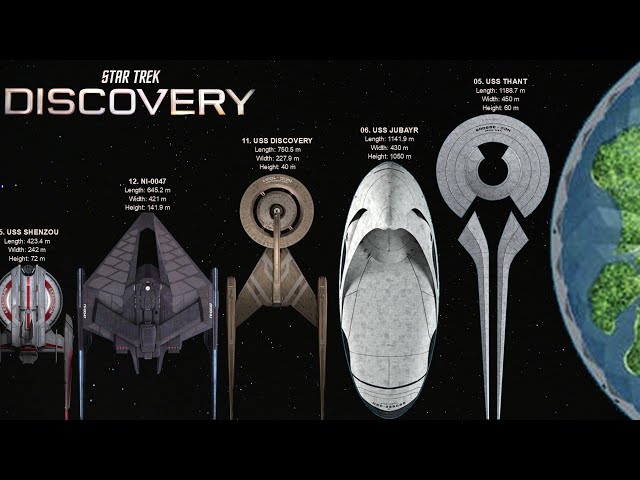
In Star Trek: Discovery Season 5, several notable starships play key roles in the unfolding story. Among them is the USS Antares, a ship with a history connected to Captain Rayner, which makes a return in this season. The season also features a critical moment where four Starfleet ships—the USS Excalibur-M, USS Credence, USS LaMar, and USS Locherer—come together to defend the Federation headquarters during tense negotiations with the Breen. Each ship brings its own significance, with the Locherer notably having apprehended key characters earlier in the episode “Erigah”. Interestingly, some fan-favorite ships like the USS Voyager-J and the 32nd-century USS Enterprise are absent during this confrontation, highlighting the evolving fleet dynamics. Beyond these, the season continues to expand the Starfleet universe with new and recurring vessels, enriching the backdrop for Burnham’s quest for a universe-altering treasure. These ships not only serve as settings for thrilling space battles but also deepen the lore, connecting past Star Trek eras with fresh narratives. This blend of classic and new starships adds a vibrant layer to the season’s adventurous spirit.
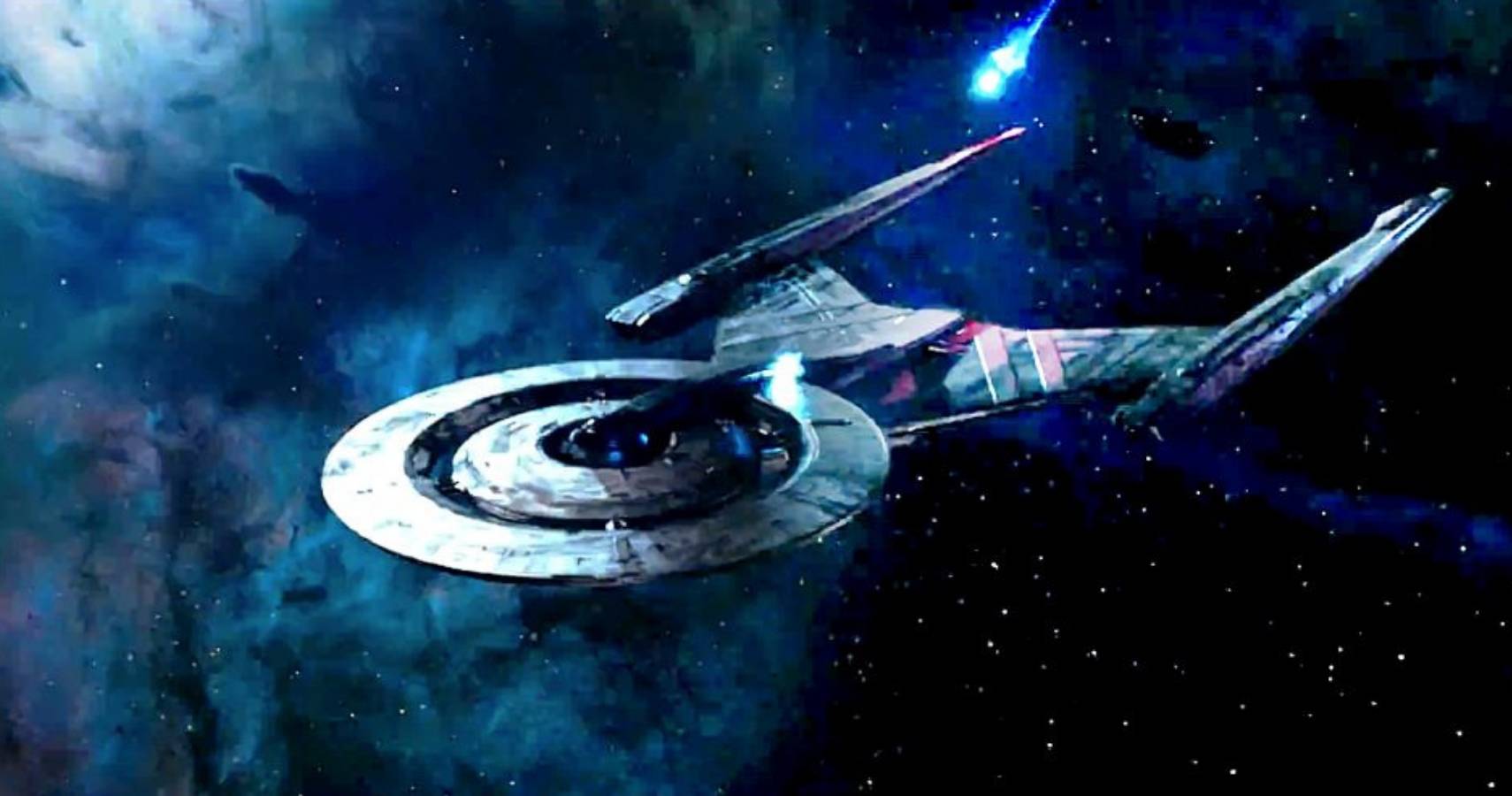
In the 32nd century of Star Trek: Discovery, starships have evolved dramatically, reflecting nearly a millennium of technological advancement. One standout is Captain Book’s scout ship, introduced early in Season 3. This sleek vessel is capable of cloaking, transwarp, and even quantum slipstream travel when fueled by benamite, though the latter is risky due to the Burn phenomenon. Interestingly, the ship can dissect itself to make sharp turns, and it features a programmable matter console for navigation, showcasing highly advanced tech.
The interior of Book’s ship remains mostly a mystery, with only the bridge and a small hallway shown. The bridge doubles as a living space, including a bed, suggesting a compact but efficient design. The rest of the ship might be dedicated to propulsion or storage, possibly using advanced transport technology to access items without walk-in space.
Beyond Book’s ship, the 32nd century fleet includes various classes like the Mars-class scout ships and Ni’Var combat vessels, which blend classic Vulcan design elements with futuristic innovations. These ships reflect a Federation that has endured and adapted after the Burn, with Earth, Ni’Var, and other planets contributing to a diverse and resilient fleet.
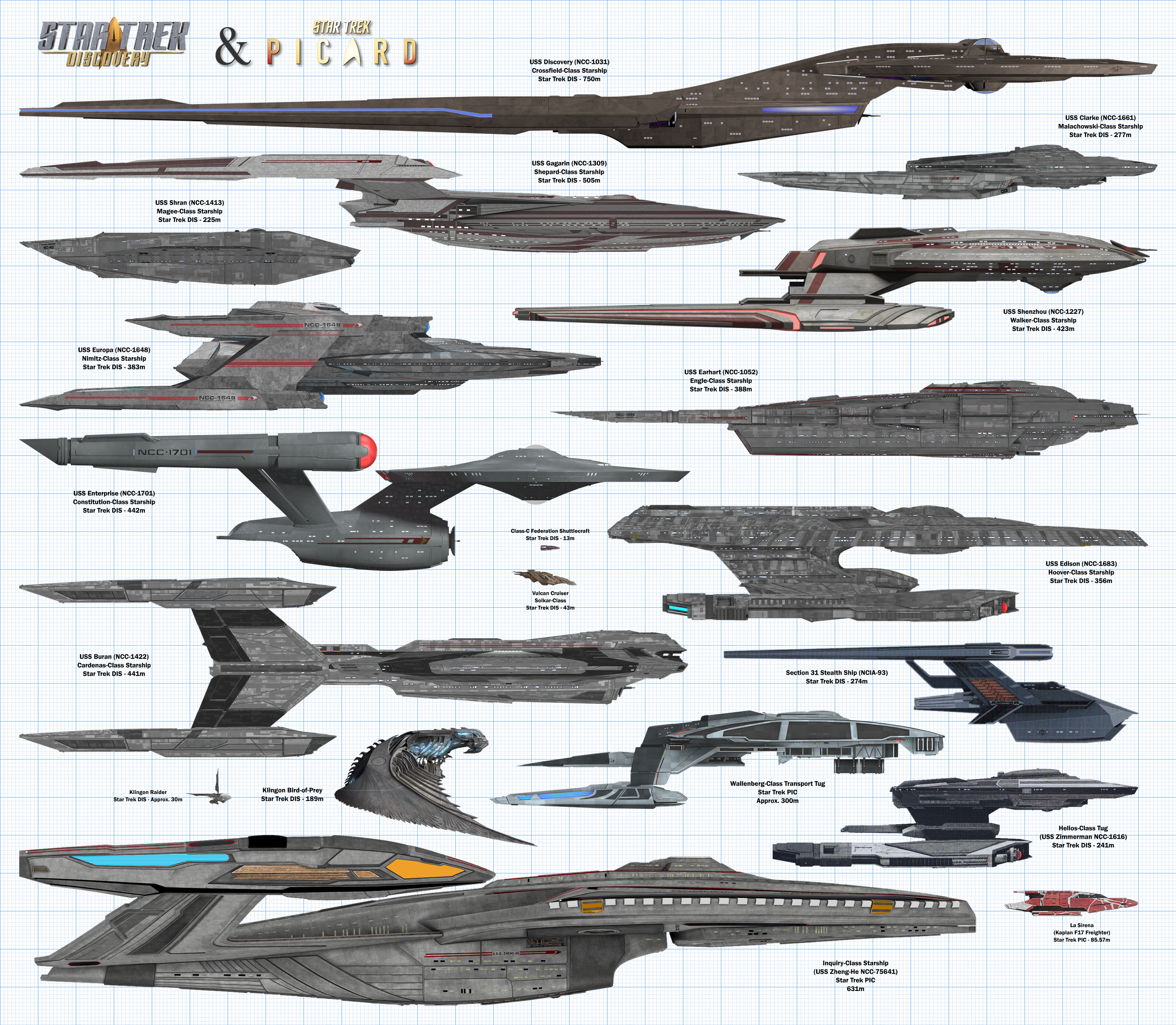
The U.S.S. Discovery in Star Trek Online is a popular starship inspired by the iconic vessel from the Star Trek: Discovery TV series. It’s known for its sleek, futuristic design and advanced technology, making it a favorite among players who enjoy commanding a ship that blends science fiction aesthetics with powerful gameplay features. The Discovery class ship in the game often comes equipped with unique weapons like phaser beam arrays and photon torpedoes, reflecting the ship’s on-screen capabilities. Players can customize it with various upgrades, including special deflector shields and advanced consoles, to enhance its combat and support roles in space battles.
What makes the U.S.S. Discovery stand out in Star Trek Online is not just its looks but also its versatility. It’s a cruiser that can handle a mix of offensive and defensive tactics, appealing to captains who like a balanced playstyle. The ship is often available through special in-game events or lock boxes, adding to its exclusivity and appeal. For fans of the Star Trek universe, piloting the Discovery in the game offers a chance to experience the thrill of commanding a legendary vessel while exploring the vastness of space in an engaging MMO setting.
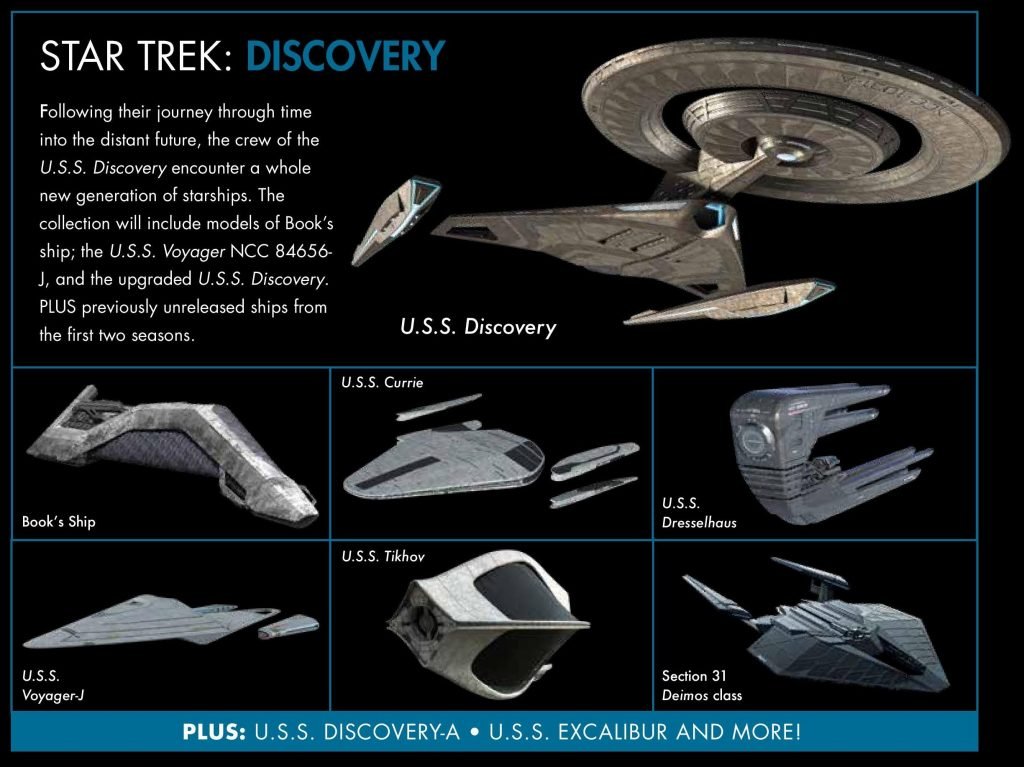
In conclusion, the ships of Star Trek: Discovery serve as more than just vehicles for interstellar travel; they embody the spirit and evolution of exploration within the Star Trek universe. From the technologically advanced USS Discovery to the formidable Klingon vessels, each ship reflects the themes of unity, conflict, and innovation that are central to the series. These starships not only facilitate thrilling adventures and complex character interactions but also provide a canvas for exploring broader societal issues. As Starfleet and its adversaries navigate the cosmos, their ships continue to inspire a sense of wonder and the quest for knowledge.